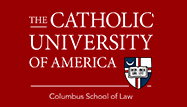Abstract
The Supreme Court has long done battle with the intricacies and subtle implications of the interplay between state and federal power with regard to commerce. Although the Supreme Court crafted the Pike balancing test in 1970, that test has proven a jurisprudential headache due to a lack of a solid definition of the key phrase “putative benefits.”
Since the Supreme Court decided Pike v. Bruce Church, circuit courts have been unable to apply the term consistently when making use of the Pike test, generating a massive circuit split. This Comment teases out the differing treatment of states’ burden of proof when it comes to making a case for whether a particular state law meets the Pike test and dodges a dormant Commerce Clause challenge. This Comment analyzes the circuits’ different approaches and makes suggestions as to which one best fits into our nation’s constitutional framework.
Recommended Citation
Nathan Gniewek,
Deference vs. Evidence: An Exploration of the Appropriate Application of Putative Benefits to the Pike Balancing Test,
68
Cath. U. L. Rev.
163
(2019).
Available at:
https://scholarship.law.edu/lawreview/vol68/iss1/10
Included in
Constitutional Law Commons, Other Law Commons, Supreme Court of the United States Commons



